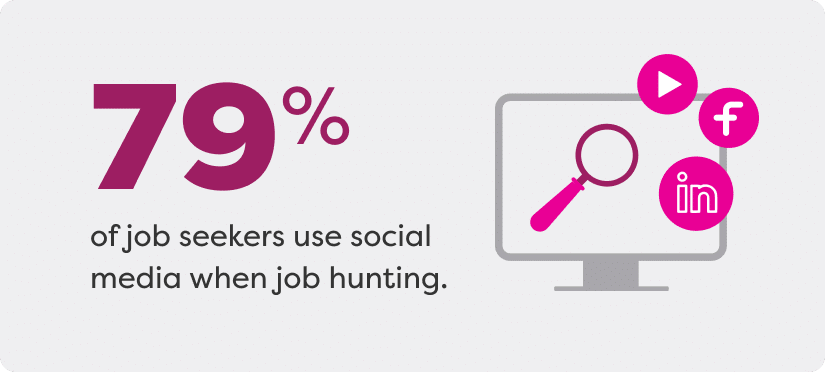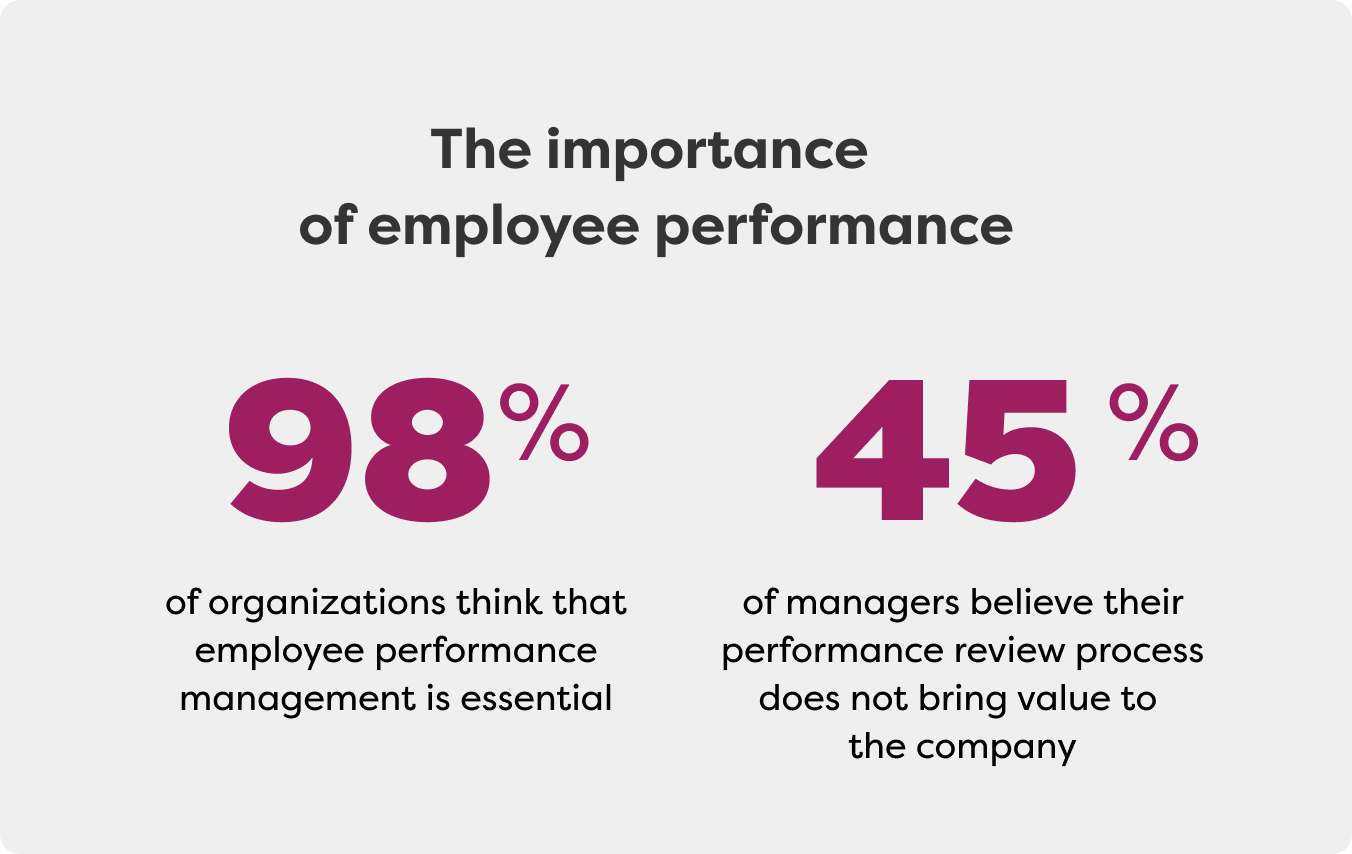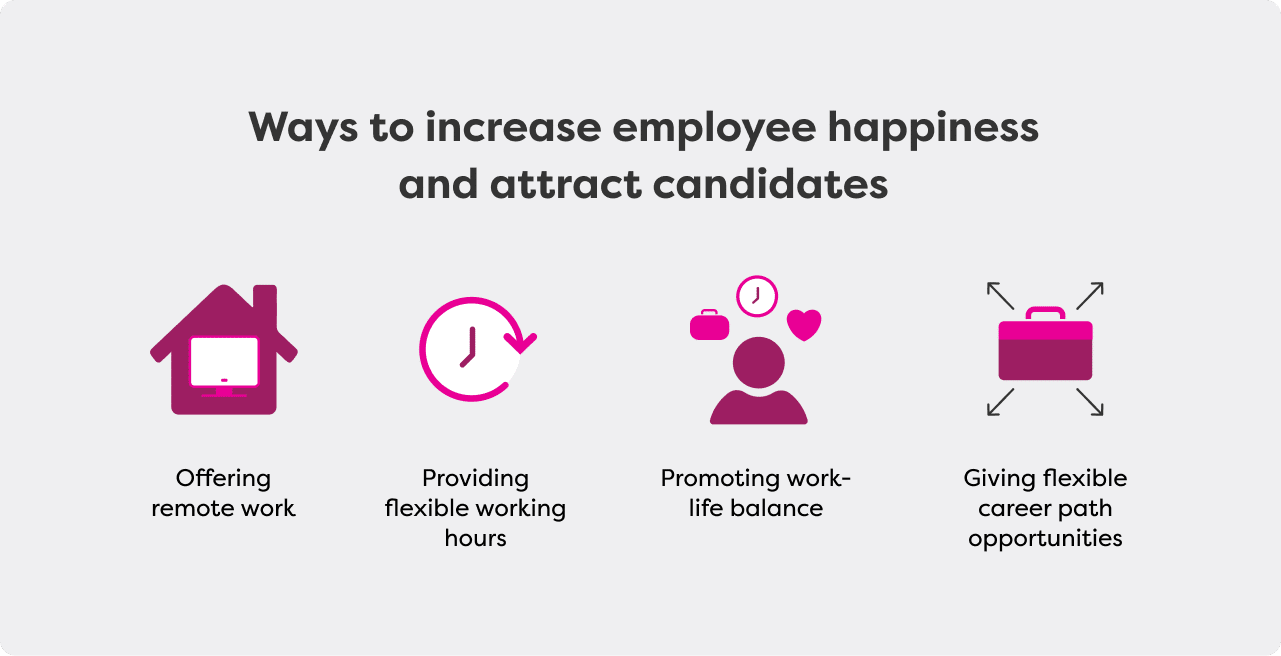Human resources statistics and people data have been at the forefront of strategic business decisions in recent years. Indeed, they guide corporate culture management practices, showing companies which issue they must focus on the most.
Here are fascinating HR statistics and workforce management challenges you need to look for in 2025!
Recruitment Process and Hiring Experience
67% of recruiters are currently struggling to find skilled candidates, and 52% face competition in the Talent War and a candidate-driven market. Therefore, they will have to get more creative in their recruitment process to attract potential employees and create a strong candidate experience.

What It Means for 2025
Writing more relatable, less selective job descriptions underlining company culture is necessary. Being seen on social media also increases your chances of finding the perfect candidate, as 79% of job seekers use social media when job hunting.
Furthermore, offering onboarding, ongoing training, and employee benefits is a crucial asset. Retraining initiatives are also a great way to fill long-vacant positions and are bound to become an integral part of the future of recruiting.

Employee Profiles and Expectations
80% of recruiters now consider diversity when hiring to pluralize professional perspectives and approaches in the workplace. Accordingly, 67% of workers would like to be part of a diverse team.
Nowadays, there is no doubt that recruitment strategies need to be updated to fit various employee profiles and new expectations.
For example, 47% of human resources departments deal with turnover because their company does not offer remote work.
What It Means for 2025
As these human resource statistics show, offering flexibility in all its forms has become the cornerstone of a positive employee experience and one of the biggest challenges in HR. Remote work, flexible working hours, work-life balance and opportunities for flexible career paths are proven to increase employee happiness and attract the majority of job seekers.

Onboarding Experience
Negative onboarding experiences account for 20% of employee turnover, which could be explained by the fact that 58% of companies consider onboarding a purely administrative process.
In turn, onboarding processes have a strong impact on employee engagement: workers who experience effective employee onboarding programs are 69% more likely to stay for three years in your company.
Click here to discover more onboarding statistics!
What It Means for 2025
In 2025, first impressions will matter more than ever. As recruitment processes get more time-consuming and costly and the job market becomes increasingly competitive, disappointing hires would be an expensive mistake.
Here is the recipe you need to create a positive onboarding experience:
- A good amount of communication during the onboarding;
- A strong basis with well-structured onboarding plans;
- Stellar remote onboarding practices to put a smile on everyone’s face;
- A sprinkle of fun onboarding ideas for that bonus WOW effect!
Employee Engagement Statistics
There is no surprise here: employee engagement remains HR professionals’ top priority in 2023. Companies with engaged workers retain 66% of them and benefit from more productive teams. Furthermore, 64% of millennials say they would rather work at a lesser-paid job they love than at a job they find boring.
What It Means for 2025
Newer generations of workers generally want to be passionate about their jobs and be a culture fit in their companies. So now more than ever, corporate culture should be at the core of engagement and retention strategies. This also goes to show that in 2025, you will need to evaluate employee satisfaction by collecting worker feedback.
Turnover and Retention Rates
While 65% of workers quit to find better-paid job opportunities, 37% left because of their managers, and 18% because their current company has a bad corporate culture.
The silver lining here is that even if you can’t afford salary raises and monetary benefits, you can win on the HR front.
What it Means for 2025
As you may have already guessed, current and future HR challenges will be centered around employer branding and employee retention rates. If they want to maintain good organizational health, companies will need to:
- Work on employer branding and on sharing the company mission;
- Create a pleasant working atmosphere for everyone;
- Offer training and career development opportunities;
- Develop workers’ soft skills;
- Look out for employee burnout and emotional exhaustion;
- Build efficient recognition programs;
- Value employee feedback.
In short, 2025 will definitely be the year of healthier management practices and better organizational culture.
HR Software Solutions
By 2030, the market of HR software solutions will have reached a value of $13.8 billion. Furthermore, 97% of HR specialists say they want to invest in automated recruitment tools. To top it all off, automating your onboarding process results in a 16% increase in hire retention.
What It Means for 2025
These statistics show that artificial intelligence and process automation will continue to redefine HR practices in years to come, saving employers and managers daily time and energy while improving efficiency.
To say that it’s time to jump on the HR technology bandwagon would be an understatement!
Overcome every HR challenge with powerful HR tech:
Folks HR’s solutions adapt to your specific needs!
Sources :
https://news.gallup.com/businessjournal/188399/retaining-employees-money-matter.aspx
https://www.quantumworkplace.com/future-of-work/employee-turnover-statistics
https://www.dailypay.com/resource-center/blog/employee-retention-rate/
https://blog.bonus.ly/surprising-employee-retention-statistics
https://elearninginfographics.com/onboarding-new-hire-statistics-need-know/
https://www.clickboarding.com/what-is-onboarding/

